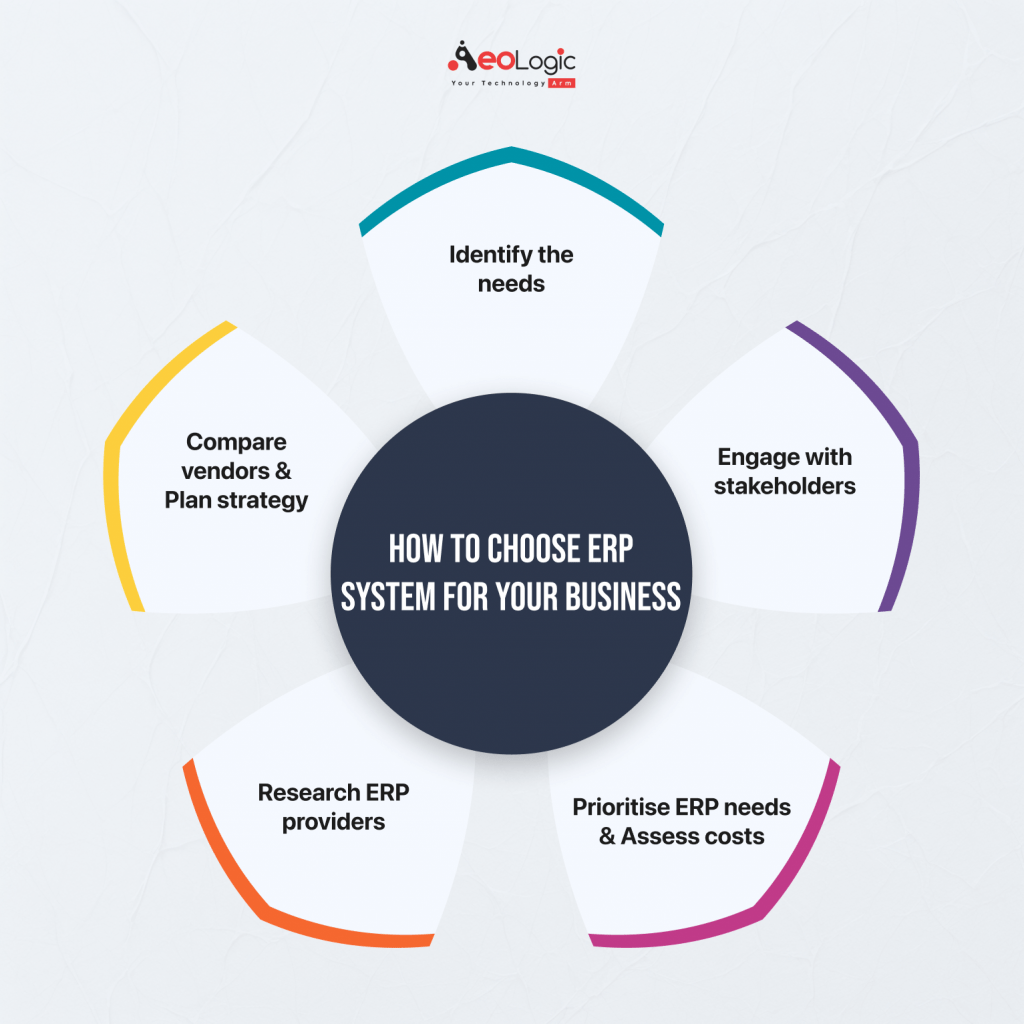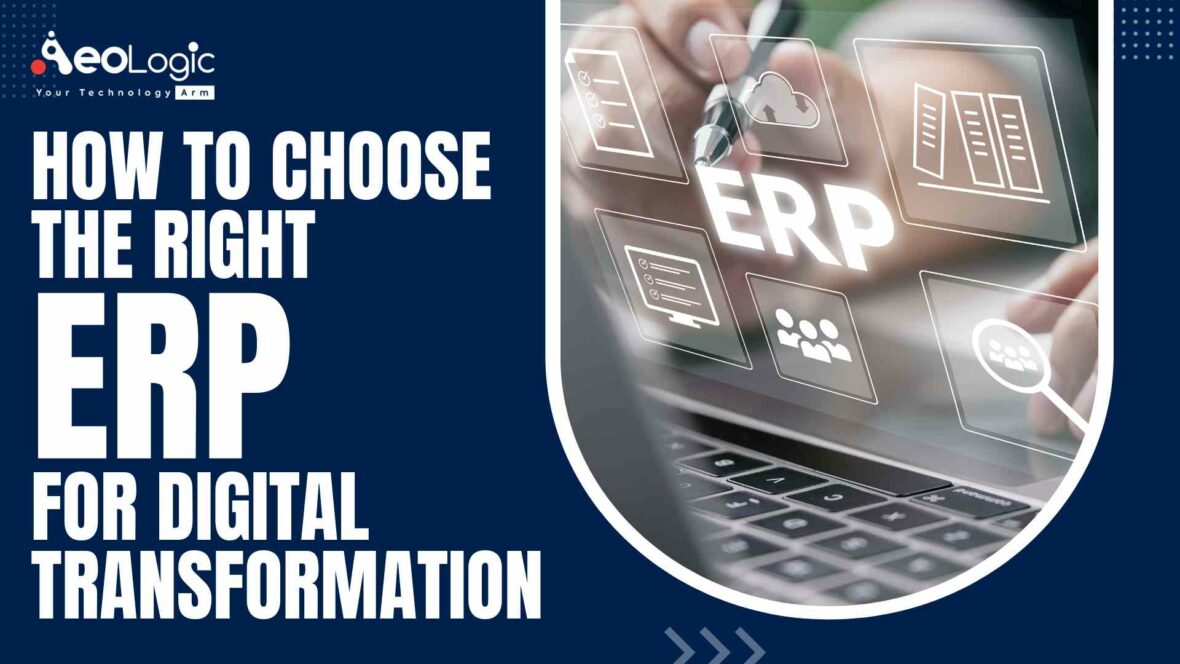Digital transformation is the integration of innovative digital technology across all corporate operations in order to enhance the customer experience and core operations. It entails discovering novel means of generating value and enhancing overall business efficacy.
What Does “Right ERP” Mean Here?
The “best ERP” is the one that fulfills your business’s requirements. Not the top-ranked system on G2 or Gartner, nor the first search result on Google. It is challenging to determine which one is optimal for your business needs. If you do not do a comprehensive ERP evaluation, you will never know which ERP system is appropriate for your business’s unique requirements and why. If it is anything you wish to comprehend, continue reading.
Purchasing an Enterprise Resource Planning (ERP) system for manufacturing, eCommerce, distribution, or education can be challenging, especially when there are several stakeholders involved. Here, we will discuss how to easily locate the ideal ERP for your firm.
Also Read: Why Is CRM Software a Game-changer When It Comes to Delivering Better Customer Experiences?
What Is Enterprise Resource Planning Software(ERP)?
ERP systems facilitate the management of a vast array of corporate tasks, including accounting, invoicing, payroll, warehousing, shipping, human resource management, and other industry-specific applications. Your choices should be dictated by your company’s needs.
Numerous businesses overlook the importance of performing their due diligence when selecting an ERP system. Organizations frequently settle for the less-than-ideal alternative, compensating for the system’s flaws. This ends up costing more in wasted effort and workarounds, as evidenced by infamous ERP failures.
ERP should be a positive engine for company change and provide your organization with a crucial competitive advantage when the right fit is achieved.
Also Read: The Role of AI in Education And Learning: Just Promises Or Revolution
How To Choose the Best ERP System for Your Business?

1. Determine why your business needs the ERP system.
Research, identify, and document the current business processes, weaknesses, and strengths. Consider how your organization’s processes will evolve in the coming years. Why is a new ERP system necessary? What difficulties will a new ERP resolve? This work will assist you in outlining requirements to ensure that an ERP system is used to solve the correct problem.
2. Identify key stakeholders and interact with them to collect requirements
Identify the main stakeholders who must contribute to the evaluation requirements of the ERP system. Identifying a suitable ERP system for the firm necessitates engagement with these key players to achieve high user acceptance in the future. If you skip this phase, you may overlook a crucial requirement or feature that important departments demand. Incorporating these perspectives into the technology evaluation process will result in high ERP system user adoption after implementation.
3. Define and rank your ERP requirements and evaluation criteria in collaboration with key stakeholders
Understanding your business’s requirements is essential to picking the ideal ERP solution. Ensure that identifying these needs (in the form of requirements) is a collaborative effort involving key decision-makers. Considering your current business processes can assist you in determining precisely what the organization requires from a new ERP system, how it will integrate with the business, and what technical and functional requirements are necessary to carry out your day-to-day operations.
At this stage, the objective is to get a clear picture of how your organization now runs and how those operations may be enhanced.
Ensure that all key stakeholders collaborate and that each demand is clearly articulated. You will later use these requirements so that prospective software providers can demonstrate their product’s capabilities within the context of your business’s requirements. Consider how a potential ERP software would integrate with your organization’s existing infrastructure.
Key Considerations for ERP specifications:
- What are your company objectives for the upcoming year?
- Which sections of the business are expanding, and which are contracting?
- How could the appropriate ERP system benefit our organization?
- Do we have a sufficient budget to meet our needs?
- What does a successful deployment for our business look like?
Must have ERP requirements:
When you and your team are clear and focused on your business requirements, the next stage is to create and rank your must-have ERP requirements list, which includes but is not limited to the following:
- Cost Functional requirements
- Security
- Integrations with existing business software infrastructure
- User Experience
- Customization and branding of the Mobile platform
Consider how a potential ERP software would integrate with your organization’s existing infrastructure. Make the list as extensive as possible at the beginning of the process, and then rank and define it based on requirements. Collaborate to collect and rank these requirements and to determine which integrations are essential. You must be aware of these standards so that when you engage solution providers, you are aware of the costs associated with any prospective third-party integrations.
Evaluate and select your service provider with the following things in mind
This rated list will serve as a help while investigating possibilities and evaluating system.
- How much can we afford?
- What type of accessibility do you require from the solution?
- What technical characteristics must the solution possess?
- Does the seller give a plan and support for implementation?
- What are the flaws of the existing solution?
- What processes must the new software support?
- Which issues should the new solution address?
4. Do a market search for ERP providers that satisfy your chosen criteria
The last part of the software selection procedure is the actual search for new software. Your key stakeholders should be involved in the search for possible software vendors who could satisfy your assessment criteria and requirements. Consider providers who offer solutions that satisfy your specifications and are capable of resolving the company’s recognized issues. Even though examining a lengthy list of providers and comparing them to your needs is time-consuming and tedious, it is vital to discover the best business solution. You can automate this process using a technology evaluation platform like Olive, rather than risking human error with spreadsheets and wasting time trawling through emails.
5. Compare ERP vendors to your criteria
Through the standard RPF Process or by requesting vendors to directly react to your requirements in Olive, you can compare vendor responses to your organization’s demands. When evaluating vendors, it is common to develop a scoring system or scorecard in spreadsheets to quantify how well each vendor meets the project criteria and each other. Once they respond, you should have a shortlist of providers to invite for a demonstration. Compare the remaining providers to your selection criteria to see which meets the business’s requirements the best.
Be conscious of bias at this phase. When evaluating vendors, it is crucial to be aware that software sales representatives will always attempt to influence the decision in their favour. After contracts are signed, hidden costs and hazards linked with purchasing their software may emerge. You must now perform your due diligence to find “hidden costs” associated with ERP systems, such as implementation charges, hardware upgrades, backfilling your project team’s resources, software maintenance, user limits, etc.
6. Develop a rollout strategy for the ERP Implementation project
Keep in mind that vendors are attempting to make a sale, so ensure that you inquire thoroughly about implementation length estimates with them. Develop an implementation project rollout strategy that includes activities required to install the software, as well as steps required to guarantee the solution is tested, really functions, and is approved by end users. Do this before to selecting a provider so that you are aware of the resources necessary for project success and the associated costs. This strategy should encompass everything from the design of business processes and workflows through data migration, many test iterations, and crucial organisational change management activities.
7. Compare the expenses and benefits of the new ERP system
Your company may choose an ERP system in order to cut expenses, improve revenue, or expand for growth. So as to comprehend the entire potential of the new ERP system, compare the system’s benefits to its costs.
Also Read: 10 Ways to Use Artificial Intelligence to Improve Business Processes
Conclusion
The era in which ERP was only accessible to very large firms has already passed. Now that cloud computing, modular systems, and other technological advancements have been made, smaller businesses may also profit from them. Global spending on digital transformation is anticipated to reach $1.97 trillion by 2022, according to a survey by IDC.
Since growth never stops and instead accelerates, more emerging trends will definitely appear in 2022 and beyond. So, let’s all consider the best course of action for moving forward with ERP digital transformation.






